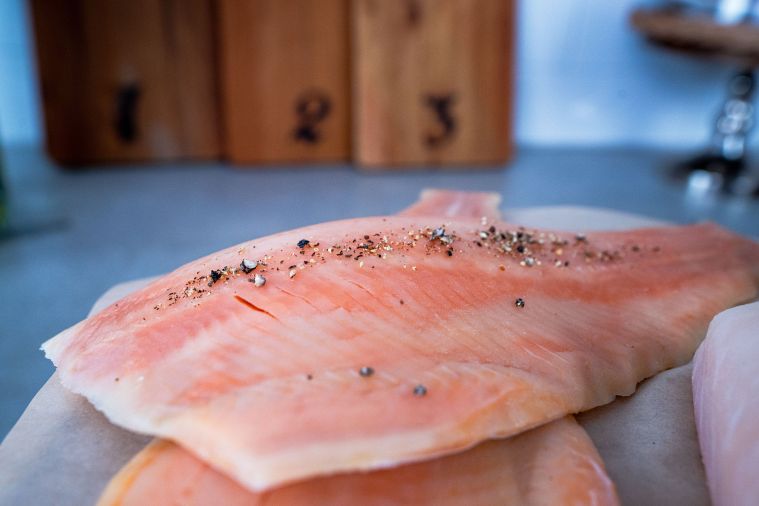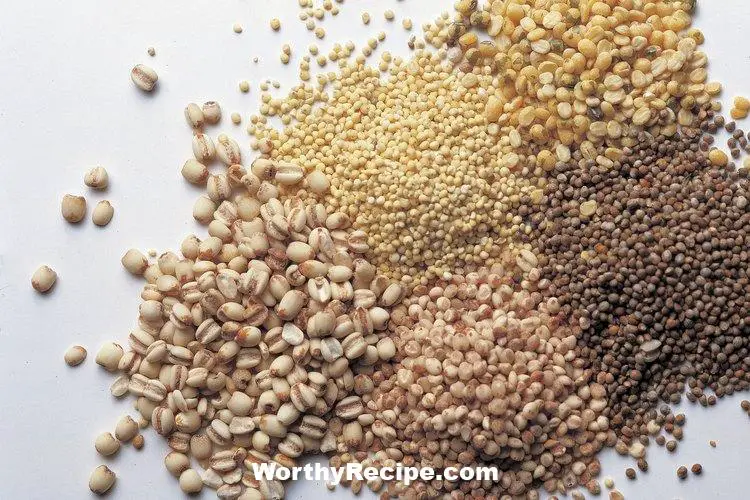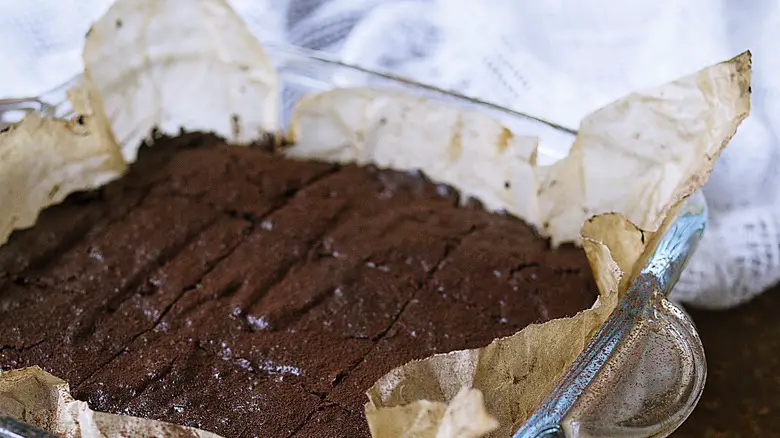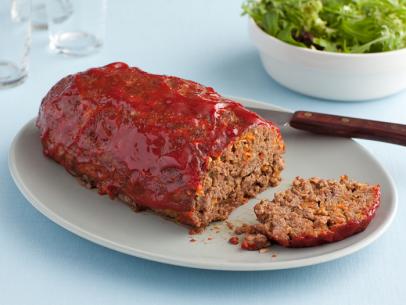Is Trout Supposed to be Pink When Cooked?
Trout is a popular fish in many parts of the world – either eaten as a main dish or used as an ingredient in other meals. The color of trout can vary depending on a variety of factors, including its diet and cooking method. But is trout supposed to be pink when cooked? In this article, we’ll explore the science behind trout coloration, natural variations in hue between different types of trout, and how cooking techniques can impact the final color of your cooked fish.
Introduction
As mentioned earlier, the coloration of trout is an important aspect when it comes to cooking and serving this popular fish. To understand why people are interested in whether or not trout should be pink when cooked, let’s briefly discuss what makes this food so special and appealing.
Trout have been enjoyed as a food source for millennia. Archaeological evidence indicates that ancient cultures throughout the world would catch and cook these fish using various methods – from smoking to baking on hot stones. The taste and texture of trout meat make it incredibly versatile: it can be flavoured with subtle herbs or spices or served simply with fresh seasonal garnish.
Today, there are many species (both farmed and wild-caught) available in supermarkets or at restaurants worldwide, but one question has arisen frequently in recent times – should you expect a pink hue when you cook your trout? Let’s find out!
The Science of Trout Coloration
Before we consider whether trout should be pink when cooked, we need to understand how pigmentation works inside fish meat.
Fish meat contains an array of pigment molecules that give it various colors depending on the type and amount present in each species. These pigments play critical roles beyond just aesthetics; they protect against harmful ultraviolet radiation from sunlight as well as oxidation by reactive oxygen species [1]. Fish possess an especially helpful team of chemicals known as carotenoids, responsible for producing bright yellows and oranges.
However, not all fish contain equal quantities of pigments in their meat; the factors determining such variations are many.
Factors affecting fish meat color
The pigmentation of a fish can be influenced by several factors, including age, diet, water temperature, health status among other factors. For example, younger fish may produce more pigment initially as they grow and mature into adults over time. Dietary intake significantly affects the pigmentation of trout when it comes to quality and presentation. Specifically, the amount of carotenoids available in any particular diet available can highly influence skin coloration [2]. Water temperatures can also affect how pigments like anthocyanin dissolve in blood vessels/tissues [3].
In summary – consistent daily nutrient intake enhances steady growth rate and maintains a stable flesh coloration which is good for presentation purposes.
Different Types of Trout and Their Natural Color
Trout come in different species with unique characteristics – ranging from large to small sizes; living in freshwater or marine water – just to mention a few differences. And Yes – they all have varying natural colors that are unmistakable from juvenile down to adult stages.
For instance;
- Brook Trout: these masters of fresh waterways are mainly found in cool waters all over North America. Typically characterized by pinkish-red spots scattered irregularly against an olive-green back; the intensity often increases under stress.
- Rainbow Trout: salmonids famous for their flashy white-striped sides making them easy prey for predators depending on the environment they live.
- Brown Trout: another freshwater species identified by their bronze spots against brownish-green skin background.
- Lake Trout: deep-water dwellers with beautiful copper-like colored skin that matures dependent on age; from silvery coloration as juveniles towards dark gray throat marking with light-colored belly scales.
These natural colors can offer valuable insights about a trout’s place of origin or feed habits based on how different trout populations share similar or different pigmentation.
Cooking Methods for Trout
The color of a cooked fish can depend largely on the cooking method you use. Different methods can impart unique flavors and textures as well as change the coloration which occasionally reveals pinkish hues. Some popular ways to prepare trout include:
Grilling
Grilling is a traditional way to cook fish, especially whole fish with skin. This method often results in a crispy brown exterior layer against tender meat that boasts its natural flavor with mild smoky bank note depending on wood chips chosen.
Broiling
Another fast way of cooking fish under dry heat in an oven, broiling involves placing the trout close to the broiler element so it will gain charred edges while still maintaining good moist content.
Smoking
Smoked trout retains most of its original moistness since it’s done at low temperatures; this imparts rich smoke favor and aroma that many kipper connoisseurs enjoy.
Baking
Baked fish has a juicy, melt-in-your-mouth texture, thanks to the stability of temperature during gradual baking which avoids leaching-out much protein from flesh due to thermal shock. Ideally – you get flaky light pink meat with alluring juicy notes and nutty overtones from blended herbs for seasoning added overhead before placing it in an oven.
Frying
Fast and tasty when properly executed, fried trout soaks up some oil during frying making the final presentation appealingly gold particles in appearance. With high likelihood of some crust coating formed on fish surface- frying promises more crunch than other methods above with flavors moderated by using seasoned light batter.
In each case above note that cooking time may vary depending on factors like thickness and size; always preheat grill/pan or smoker using easy-to-burn fuel woods like alder or maple if applicable to add additional but subtle flavour profile into dish as part of presentation.
The Pink Hue Debate
Now we come to the big question; is trout supposed to be pink when cooked?
Many people prefer their fish cooked all the way through, with no pink flesh visible at all. This preference is due in part to concerns about seafood-borne illnesses, such as salmonella, which can be contracted from undercooked fish. However, cooking trout until it’s dry and unrecognizable isn’t necessary.
The coloration in cooked trout has some correlation to pigments’ energy profile under high heat application; thus creating a range of pink shades like those seen in farmed salmon.
People who prefer pink-cooked fish know that undercooking almost doubles capacity retention since proteins coagulate at low heat and keep free moisture molecules in check; hence an increase in tenderness and better mouthfeel. Cooking too long or too harshly degrades nutrients; leaving you with vitamin-deficient mush. Therefore if your trout looking visibly cooked on surface but still firm & crumbly flaky inside, then served hot- I say kudos!
All things considered – If you want fully cooked trout but still notice some level of pinkness after cooking then perhaps one factor affecting this could be low pH levels common in freshwater sources that hampers ability for heme molecule to set as tightly as they do inside bloodstreams [4]. Alternatively – get properly taken care of stock famed for fresh seafood distribution only – never unfrozen products – since some animals may look pinkish influenced by dyes etc during storage time before being presented to consumers elsewhere.
In reality, whether you desire your trout cooked through or medium done with pink residue is all up to personal preference- health-consciousness included.
Safe Cooking Temperature for Trout
There are standard safe cooking temperatures guidelines from USDA for certain types of meats including seafood like salmon (including wild-caught and farmed.) But first here are a few statistics:
- 50% of the outbreaks involving Salmonella are related to undercooked seafood
- The most common foodborne illness caused by bacteria is salmonellosis.
According to USDA, fish should be cooked to an internal temperature of at least 145°F (63°C) for safe consumption, which will kill any potential harmful bacteria. If buying fillets Its also important to invest in a good meat thermometer that reads user-friendly digital variance values so you can confirm if cook-worthy or not.
Consuming Undercooked Fish: Risks and Consequences
Consuming undercooked fish carries risks beyond just the possibility of contracting salmonella or other bacterial infections. Raw or undercooked fish can contain parasites that might infect your digestive system leading to gastrointestinal issues such as nausea, abdominal pain or discomfort,
There are identified parasites in freshwater reservoirs such as Diphyllobothrium latum; a fish tapeworm popular particularly in countries where trout is considered a local delicacy – Norway being one example [5].
Another condition associated with eating raw or undercooked skeletal fish headed by smallmouth bass & pike – Guillain-Barre syndrome among others like Mycobacterium marinum infection infamous for causing granulomatous lesions on wrist skin surface if left untreated early [6]
These illnesses can cause distressing and even life-threatening symptoms. Therefore it’s advisable to cook your trout thoroughly before consuming it unless you’re eating sushi created with special preparing techniques guarantee-free from any invisible pathogens.
Conclusion
In conclusion, while there may not be a definitive answer as to whether trout is “supposed” to be pink when cooked or not – understanding the factors involved in fish coloration and cooking methods will help you achieve your preferred result end. Natural trout coloration varies depending on species and habitats, but there’s no set rule regarding how cooked versions of this beloved food need look like regarding final color presentation respectfully-speaking.
Overcooking trout has been shown to decrease nutritional content and moisture, but undercooking it can be potentially hazardous. A good balance between safe cooking temperatures, personalized preferences of pink tones along with cooking method maneuvers can yield a journey towards healthier, more flavorful eating habits encouraging more sustainable fishing practices for all concerned parties involve in this aquatic endeavor. Bon Appétit!
Q&A
Q1. Is it normal for trout to turn pink when cooked?
Yes, it is perfectly normal for trout to turn pink when cooked. The color change occurs due to the presence of a pigment called astaxanthin, which gets released as the heat causes the trout’s natural fat to melt.
Q2. Is there a difference in pinkness between wild and farmed trout?
There can be a difference in the intensity of pink color between wild and farmed trout, as the latter are often fed pellets containing fishmeal or synthetic astaxanthin that enhance the hue. However, both types of trout can turn visibly pink after cooking.
Q3. Can undercooked or overcooked trout affect its pink color?
Yes, undercooked or overcooked trout may impact its overall appearance and texture, including its pinkness. If not cooked enough, the flesh may remain translucent and lack flavor; if overcooked, it can dry out and appear a paler shade of pink.
Q4. Can seasoning or marinades affect how much pink shows up in cooked trout?
Certain spice blends or marinades that contain acidic ingredients like lemon juice or vinegar may slightly alter the color of cooked trout by breaking down some of its pigments. Still, this effect isn’t significant enough to cause a drastic shift in the final appearance of your dish. Ultimately, both seasoned and unseasoned trout can display varying shades of pink while remaining safe and delicious to eat.



